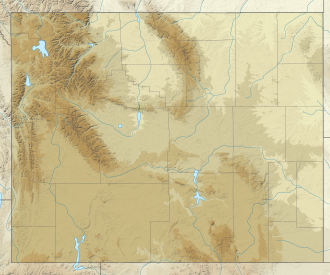| Turbid Lake | |
|---|---|
| Location | Park County, Wyoming |
| Coordinates | 44°33′00″N110°15′39″W / 44.549906°N 110.260925°W |
| Type | lake |
Turbid Lake is a lake in Park County, Wyoming, in the United States. [1] Turbid Lake was so named on account of its muddy water. [2]
The lake is believed to have formed in the crater of a hydrothermal explosion some time around 1300 BC, which created a 4,200 by 5,000 by 100 ft (1,280 by 1,524 by 30 m) crater, the floor of which eventually filled up to form the lake.
